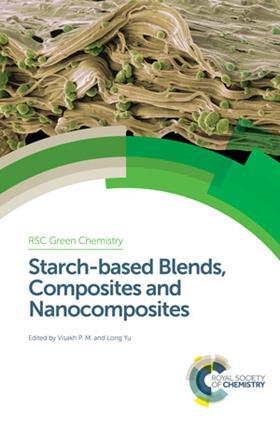P M Visakh and Long Yu
Royal Society of Chemistry
2015 | 439pp | £197
ISBN 9781849739795
Buy this book from the Royal Society of Chemistry’s bookshop (RSC members receive a discount)

Despite being one of the most common forms of organic carbon on the Earth’s surface, starch has always had a rather dull reputation. It is an excellent food source and can be used in the production of cardboard and paper, but it is not a topic that will light up the pages of a high quality journal. Well, if this is your opinion of the topic, you probably need to read this book.
The perceived problem with starch is that it is easily broken down in the environment by enzymes to form a variety of sugars – a process that is taking place right now in your stomach as you read this. To a green chemist, however, the fact that it can be completely degraded is the main advantage of its use. Biopolymers are without doubt one of the hot topics of the new millennium, with starch and its composites leading the way. Starch-based blends, composites and nanocomposites is the latest book in the Royal Society of Chemistry’s Green Chemistry series, which has highlighted sustainability issues, processing technologies and alternative feedstocks. The topic of this book is clearly the last of these.
This book draws together 11 chapters covering not only the basic chemistry and physical properties of starches, but also their preparation, characterisation and application in a variety of advanced material composites. The book quite rightly focuses on the use of starch in novel materials, which have the desired mechanical properties through plasticisation and blending, but also touches on the use of chemical modification to achieve the right property balance.
Cynics, me included, may question the inclusion of nanocomposites in the title and why an apparent research niche is given such prominence. But the introduction makes clear why this is an important topic, highlighting the relative simplicity of preparing nanocrystalline starch through hydrolysis. It is a field that I have mistakenly overlooked, but one which I am sure will become more prominent.
The book covers a wide range of topics from chemical modification through to fracture mechanics. I particularly like that many of the chapters are forward looking, pointing out challenges facing the field. This book is a welcome addition to the excellent Green Chemistry series and a must for anyone involved in biomaterials, green chemistry or food chemistry.












No comments yet